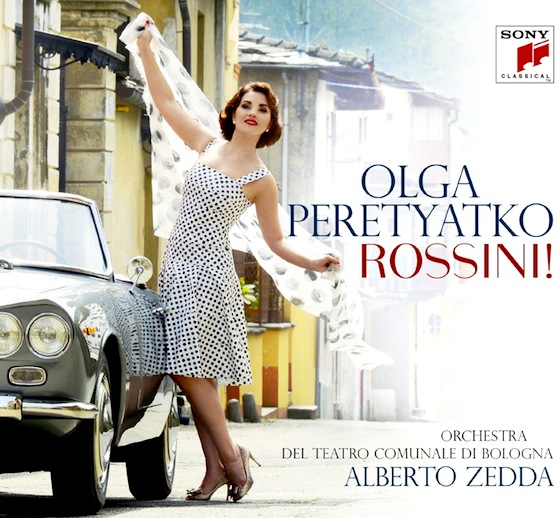![]() |
| The latest release of a famous recording. Pre-order here. |
Recorded at Kingsway Hall in London between December 1978 and November 1981, this set of complete songs from Jean Sibelius features baritone Tom Krause and soprano Elisabeth Söderström accompanied by pianists Irwin Gage and Vladimir Ashkenazy as well as guitarist Carlos Bonell. It won the Gramophone Award for "Solo Vocal Award" in 1985. Originally released on LP, this 4-CD set was available previously only by Universal Japan and then as part of a special limited-edition Gramophone Awards Collection series on Decca. For connoisseurs, this edition sets the standard quite high in the artistry department. Born in the Swedish-speaking region of Finland, Sibelius didn't begin to learn Finnish until age 11. His songs were made popular worldwide by opera singers Birgit Nilsson and Jussi Björling through their recitals, concerts, and recordings. Scandinavian music in general continued to be under-represented on disc until Elisabeth Söderström recorded a 1957 program of works that ranged from Erik Gustav Geijer to Ture Rangström. Since the initial release of Decca's Sibelius songs, the industry has produced a plethora of recordings featuring the composer's vocal gems interpreted by artists such as Karita Mattila, Anne Sofie von Otter, Monica Groop, Katarina Karnéus, Soile Isokoski, and Barbara Bonney. Listen to excerpts from Sibelius: The Complete Songs by clicking here. Read a 2004 review of the Gramophone re-issue, and see the complete list of songs, after the jump. [Source, Source]Five Christmas Song Songs, Op. 1; Arioso, Op. 3; Seven Songs of Runeberg, Op. 13; Seven Songs, Op. 17; Two Songs, Op. 35; Six Songs, Op. 36. Five Songs, Op. 37. Five Songs, Op. 38. Six Songs, Op. 50. Eight Songs of Josephson, Op. 57. Eight Songs, Op. 61. Six Songs: No. 3, The Kiss, Op. 72; No. 4, The echo nymph, Op. 72; No. 5, Der Wanderer und der Bach, Op. 72; No. 6, A hundred ways, Op. 72. Six Songs, Op. 86. Six Songs, Op. 88. Six songs of Runeberg, Op. 90. Serenade (1888). Segelfahrt (1899). Row, row duck (1899). Hymn to Thaïs (1900). Erloschen (1906). Narciss (c. 1918). Small girls (1920). King Christian II — Serenade, Op. 27. Pelléas et Mélisande (Les trois soeurs aveugles), Op. 46. Twelfth Night: Come away, Death; When that I was.The record companies are always on the look-out for the latest 'hook' on which to hang the revival of their back catalogues. Decca have here chosen to reissue a selection of albums, some dating back to 1979, that have attracted prizes in the annual Gramophone Awards. I wonder if they are doing anything similar for Fanfare in the USA?
While the occasional music-lover may tire of the annual ‘same-old same-old’ glad-rags photofest and portentous media write-ups for the prize ceremony there is good reason to plough back through the Gramophone prize-winner discs. All the more so since this four disc set has not yet been replaced by the competition.
The Krause/Söderström set is the most extensive survey of Sibelius's songs for voice and piano and in one case (Two songs fromShakespeare's Twelfth NightOp. 60), guitar. It has the sort of eminence commanded by Söderström’s Rachmaninov songs (also Decca), Thwaite's Grainger (Chandos) and Graham Johnson's Schubert lieder series (Hyperion).
Sibelius's 93 songs were written over the period from 1892 to 1917. A handful of noble stragglers (also included here) come from later including the deeply serious exaltedNarcissfrom 1918 and Hjalmar Procopé'sSmå Flickornafrom 1920.
Here are a few sampled impressions of what is a treasury that will yield a lifetime of pleasing serendipity. It's the kind of set where, if you have a four CD changer and use the 'random' setting, you will find new friends each time.
TheSerenadby Runeberg andNu så kommer julen!(Topelius) offer rounded and sweet flowing melody. Runeberg draws a variety of response from Sibelius: for example the surprisingly dissonant starriness ofArioso.
There are occasional mis-hits like the gluey reverence ofGiv mig ej glansbut in fairness there are not many of these.
Some songs are scenas as in the case of rumbling and rolling heroism ofUnder strandens granarwith a surprisingly nightmarish piano line like a German expressionist film from the 1920s. The same occluded black-cloud mood carries over intoHjärtats morgen. It can be heard again (a little diluted) inVain Hopes(CD3 tr. 25) where it tracks through the Lisztian wave imagery conjured by the piano - more Runeberg again.
InVåren flyktar hastigtwe get the equivalent ofWho is Sylvia?- time is passing grasp it - Carpe diem - a message without frontiers.Vilseis, by contrast, a whirlwind.
En slåndamarks the first appearance by Söderström. It is a punishingly challenging song in which she sings unaccompanied for great stretches.
Krause, the numerically dominant voice here, is very good at the sustained line and his tawny leonine tone is always agreeable. Try him inSegelfahrt(CD2 tr. 1) where there is a hymnal quality to the melodic contour.The First KissandDid I just Dreamare other more popular Sibelius songs with a similarly heroic-sadness. They are superbly telegraphed by Krause. More personal and inward is theSouda souda sinisorsajust afterSegelfahrt.
Söderström singsJubal, the story of the warrior who kills a swan whose spirit returns to convince him to string his bow so that it can be played as a musical instrument - Jubal's lyre. A case of swords into ploughshares again. The music is rather expressionist with stern and gaunt chords in the piano line or mosaic decoration. There are also predictable, but extremely skilled, harp-like suggestions. You can find similar allusive writing inThe harpist and his son(CD2 tr. 19) andErloschen(CD3 tr. 7).
This sort of illustrative writing is not restricted to the harp. The piano evokes the turningMill-Wheelin Sibelius's dour setting of Ernst Josephson's lyric (CD3 tr.11).
A Schubertian carefree smile dances throughMay(CD3 tr.12), again a Josephson setting (Söderström) contrasting with the pessimism and Swedish gloom ofThe Nix(the spirit of the waterfall) conjured by the lonely wanderer's mood. The happy 'strain' also can be heard inMy thoughts have a hundred ways(CD3 tr. 26),A singer's reward(CD4 tr. 9) and inDer Wanderer under der Bach(CD4 tr.3). Not quite Schubertian but certainly happy is the late songYoung Girls(CD4 tr. 24) in which Söderström and Ashkenazy neatly trip the waltz to Hjalmar Procopé's words. These trace the arc of time’s passage from young girl to granny.
TheTwo Shakespeare Songsare guitar-accompanied.Come away deathis bleak - no easy serenades here.When That I was and a little tiny boyis a mite lighter but it is still fairly stern. These sessions must have been an early opportunity for Carlos Bonell who is given little in the way of ingratiating bait in Sibelius's writing.
InWhen I dream(setting K A Tavastjerna) the oppressive depression is gradually dispelled by a chiming piano. The voice rises to a nightingale line for Krause who caresses every moment.
There is a calypso or Neapolitan flavour toDolce far nienteperhaps this would have attracted Bjorling or Gigli - it has that sort of line to it. Krause makes hay with the piece. It is an Italian serenade without sentimentality - well, not much.
Strange rhythmic edges, illustrating the spinning wheel and in turn the passage of time, protrude throughO sisters O brother O loving couples.It is almost jazzy. This is another Söderström song. The piano writing here sounds rather like Ravel.
The lengthy scenaTeodorais a setting of Gripenberg. The vocal part is awed and gripped with fear as befits the poem’s bloody cocktail of sex and sadism. It is sensational but the music is more akin to early Schoenberg than to the Sibelius we think we know. Just as bleakly tragic, complete with sadistic imagery (bloody hands, red lips, raspberry juice) and ursine writing for the piano, isThe Girl returned from meeting her lover.
Rydberg'sAutumn eveningis just as famous (in fact CD2 has the majority of the songs that have found individual fame) but is stronger on autumnal atmosphere than on the sort of heroic melodic gesture that you find inDid I just Dream.On a veranda by the seais another gloomy poem by Viktor Rydberg. Sibelius does nothing to defeat the mood. This moody line can be traced as far as Op. 90 No. 1The North(CD4 tr.17).
Svarta Rosaris famous and we can well imagine Jussi Björling’s singing such is the song’s buoyant character.
The Ballgame at Trianonis a care-free little piece which for me belongs in the same company as Gurney's settingWhere is the landlord of old Hawk and Buckle. It glints and lilts in equal measure in the voice and hands of Söderström and Ashkenazy. Krause has a similar honour in the songMorningfrom Op.90 at CD4 tr. 18.
InSäv Säv Susa(Sigh rushes sigh) Krause handles the tragic drowning of the maid Ingalill with a staunchness that reminds us ofKullervo's lament.
I had wondered if Fröding's poemI wish I were in Indialandwould be from the genre of pictorial exotica. Not a bit of it. There is a touch of eroticism here, much dark mystery only dispelled by the exalted climactic wordsI wish I were a son of the land of dreams, a native of Indialand.
The six German songs of Op. 50 include several grim songs such asAus banger brustandSehnsucht.
Nine of the songs are taken by Söderström with Ashkenazy while Krause does duty for the rest with seasoned lieder campaigner Irwin Gage.
None of the songs are grouped in cycles. Their opus number allocation follows publishing pragmatism with groups of five or six songs making a worthwhile volume. There are exceptions to this pattern such as isolated songs like the RunebergAriosoOp. 3,The Serenad, pairs of songs on CDs 2 and 3 and the four late stragglers at the end of CD 4.
This set won the Solo Vocal Award in 1985. It was first issued on LP (Argo Decca) in the very early 1980s and then on CD in 1984, the year after the launch of the new medium. Many will have missed it. No excuses now.
The Decca booklet cuts no corners and contains three pages of genuinely readable notes by Sibelius doyen Robert Layton, the full original language texts of the songs plus translations into English - poetically done by Jeremy Parsons.
The lion's share of the songs are to poems in Swedish (the language of Finland's cultural elite at the time). Nine are in German, one in French and only five in Finnish of whichLastu lainehilla(Driftwood) is a cantabile treasure as also isKaiutar(Echo) at CD4 tr. 2. There is even one in English,Thais,setting the sort of poem that would have been selected by Granville Bantock (the dedicatee of Sibelius's Third Symphony) if only he had known about it.
Sibelius's home language was Swedish, the medium of the educated classes, administrators, lawyers and artists. The Finnish language at that time was seen as the preserve of the masses. At the age of eight, however, Sibelius began to learn Finnish in order to qualify for the country 's first Finnish language school. This makes for a fascinating balance since the choral symphonyKullervo(written slap-bang in the middle of his song-productive period),Ukko,Luonnotarand many others use Finnish texts.
This Decca set reflects a noble recording enterprise both in conception and execution. Its fame has not dimmed over the years. Would that such excellent and systematically fine endeavours were extended to the songs of Medtner, Yrjö Kilpinen, Ivor Gurney, Yuri Shaporin, C.W. Orr and Michael Head.
Rob Barnett


























































